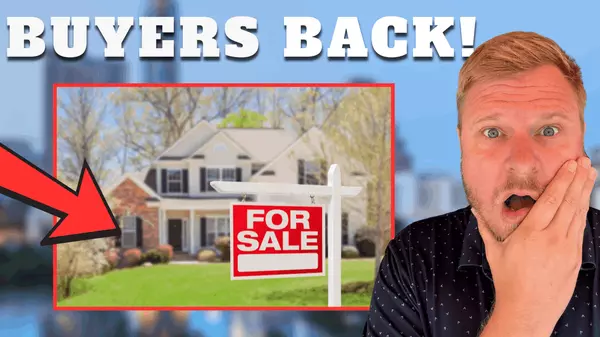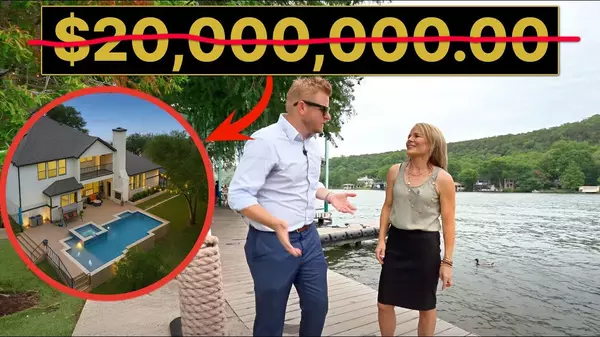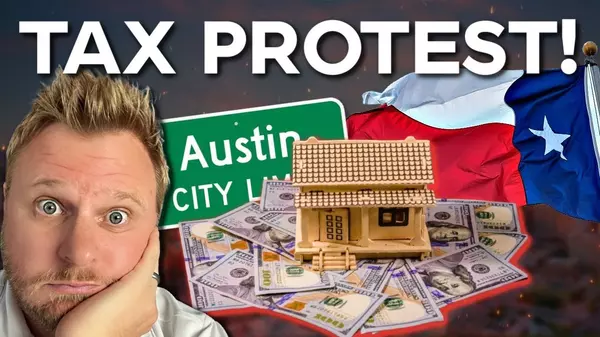Check Out What's Coming to AUSTIN!

Big Holes, Big Dreams: Updates on My Turn 11 Car Condo + What’s Coming to COTA Well, I hope this big hole in the ground isn’t a sign that my car condo is a money pit! Not that I think it is—but let’s be honest, it’s kind of funny that before we’ve even made progress above ground, we’ve already had
Read MoreAustin's Future: Growth or Gridlock? | 7 Major Developments That Could Transform the City

If you thought Austin couldn’t get any weirder, think again. From a thousand-room hotel in the middle of a racetrack to a surf park revival and a new Hollywood in Bastrop, the city is undergoing a transformation unlike anything we've seen before. These real estate developments promise jobs, inno
Read MoreAustin Home Prices Hit BOTTOM!

Is the Austin Housing Market Finally Coming Back? The Top 5 Fastest Growing Areas in 2025 The Austin housing market has been through its ups and downs in the past year. As we move further into 2025, many homebuyers and investors are wondering: Is the Austin market finally on the rebound? And i
Read MoreExploring Parton Ranch: New Construction, Price Reductions, and What You Need to Know

Are you considering buying a new construction home in Austin? Parton Ranch is one of the most talked-about neighborhoods right now, with new developments and homes being built by two well-known builders, Perry Homes and Highland Homes. As construction continues in this rapidly expanding communit
Read MoreBiggest Mistakes Homes Buyers Are Making In 2025

In today’s Austin housing market, buyers and sellers are making some critical mistakes that could cost them in the long run. Here’s a breakdown of the biggest mistakes buyers and sellers are making right now: Biggest Mistakes Buyers Are Making in the Austin Market Not Sh
Read MoreBuyers Coming Back To The Housing Market…

It seems like everyone is asking, “Is the Austin housing market finally crashing?” The truth? We’re seeing shifts that suggest more of a reset than a full-on crash. Here’s the breakdown of what’s really going on. Home Buyers Are Back, but There Are Shifts in Inventory After a long period of sk
Read MoreIs the Austin Housing Market Crashing?

The question that’s been on many people's minds: Is the Austin housing market finally crashing or has it already crashed? Today, I’m diving into the most recent numbers for May and breaking down what’s really happening in the Austin housing market. With all the talk about rising inventory, dro
Read MoreEverything NEW and Coming SOON To Austin 2025/2026

Austin, Texas, is experiencing significant changes, and some of these shifts are making the city denser and more populated. With so much growth happening around us, the question is: Does this make Austin better, or is it turning the city into something it wasn’t meant to be? Today, let’s dive de
Read MoreStunning Luxury Home for Sale Near Lake Austin: Your Dream Home Awaits

If you’ve ever dreamed of living near the serene beauty of Lake Austin, you’re not alone. The allure of lakeside living is undeniable, and today we’re giving you an exclusive look at one of our newest listings in the area that will definitely turn heads. 2625 Area is an exquisite, 5,000-square-f
Read MoreNew Construction in Austin: Should You Buy Now?

As we continue to see shifts in the housing market, many potential buyers in the Austin area are considering new construction homes. The allure of brand-new homes, modern designs, and incentives like discounted interest rates is tempting, but is it the right time to buy a new build, especially
Read MoreIs the Austin Housing Market Really a Buyer’s Market?

As the Austin housing market continues to evolve, many potential buyers are left wondering: Is it truly a buyer's market? With fluctuating interest rates, increased inventory, and shifting dynamics in the market, it can be challenging to determine when is the right time to buy in this fast-growi
Read MoreIs Austin’s Push for Density a Bold Move for Growth or a Money Grab?

Is Austin’s Push for Density a Bold Move for Growth or a Money Grab? The city of Austin is no stranger to growth and transformation. Over the last decade, it has become one of the fastest-growing cities in the United States, attracting a diverse range of residents, businesses, and investors. But
Read MoreExploring Broken Oak: Georgetown’s Premier Neighborhood for Luxury Living and Modern Comfort

Exploring Broken Oak: Georgetown’s Premier Neighborhood for Luxury Living and Modern Comfort Are you looking for a new home in Georgetown, Texas? With its stunning landscapes, excellent schools, and a rapidly growing community, Georgetown is quickly becoming one of the most desirable areas in th
Read MoreTexas Homeowners Are Overpaying on Property Taxes! Here's How I Help My Clients Save

Texas Homeowners Are Overpaying on Property Taxes! Here's How I Help My Clients Save As a Realtor here in Austin, I talk to homeowners every week who are shocked by how high their property tax assessments have become. You may have opened your latest tax bill and thought, “How is my home worth that
Read More-

Exploring the Exciting World of Car Condos at Turn 11: The Ultimate Destination for Car Enthusiasts and Content Creators If you’ve ever dreamed of owning a luxury space that combines your love for high-end cars, exclusive events, and the thrill of motorsports, then car condos might just be the
Read More A Tale of Two Markets: Austin vs. The Austin MSA - What’s Really Happening in the Housing Market?

A Tale of Two Markets: Austin vs. The Austin MSA - What’s Really Happening in the Housing Market? If you’ve been following the Austin housing market closely, you might have heard conflicting opinions. While some market analysts, like Reventure, are predicting a market crash, others see the curre
Read MoreEveryone Is Leaving Austin Texas! For Where?

If you've been keeping an eye on Austin’s real estate market recently, you may have noticed a significant shift: many people are leaving the city of Austin and choosing to settle in the surrounding suburbs. While Austin is still a thriving, vibrant city, there are numerous reasons why many resi
Read MoreBuying A Home With Cryptocurrency

In the rapidly evolving landscape of finance and technology, the rise of cryptocurrency is one of the most profound changes in the way we think about money. Cryptocurrencies like Bitcoin, Ethereum, and newer altcoins have disrupted traditional financial systems, creating new opportunities for in
Read MoreAffordable Homes in Austin and Its Suburbs: Where to Buy Under the Median Price

Affordable Homes in Austin and Its Suburbs: Where to Buy Under the Median Price If you're looking to buy a home in the Austin, Texas area, you may have noticed that home prices have been rising rapidly over the past few years. As of the latest stats, the median home price in Austin itself is $55
Read MoreIs the Austin Housing Market Crashing? What Buyers and Sellers Need to Know in 2025

The Austin real estate market has always been a hot topic, and recent reports about home price declines have raised questions about the market’s stability. In February 2025, home prices in Austin dropped year-over-year. This has led many to wonder, “Is the housing market crashing, or is
Read More
Categories
Recent Posts










